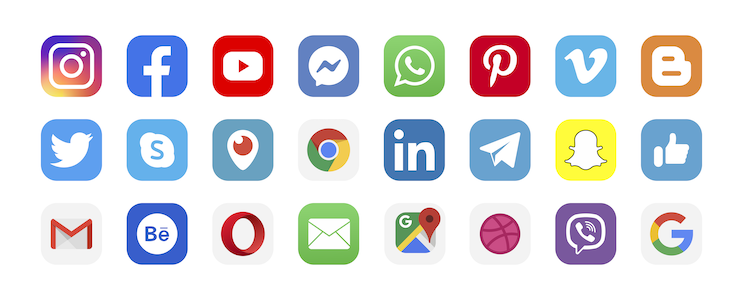
In constant evolution, our Web is changing and becoming more and more connected and permissive. Today I decided to explain in a few lines what Web 3.0 is, what major changes it will bring to our society and by extension to our lives?
Before getting to the heart of the matter, let's go back to the history of the Web as we know it today.
The Web 1.0: The Web of hyperlinks and web pages (1991-1999)
This is the first version of the so-called public web, called traditional Web it is above all a static web, its main objective is the distribution of information. Mostly used by institutions and other large groups, it is characterized by business pages, presentations of products or professional concepts.
The distribution of information is unilateral and often allows to receive information but not to retransmit it behind. The example of newspaper articles is telling, you can read the article produced by your favorite newspaper but you can not or hardly create your own media of information distribution
Web 2.0: The Social Web (2000-2010)
Also called Participatory Web, the internet becomes a source of information sharing between users.
This is the form of the web with which we are most familiar today, it is the Web 2.0 that allowed the advent of social networks, Facebook, Myspace, Instagram .... The list is long! It's the participative web, the one that allows us to share photos, videos, gifs, forums, wikis, to use our smartphones everywhere there are enough networks.

Example :
You are a flat earth fan, you will find a plethora of blogs, sites and other content created by other users as convinced as you, which will support your idea that our beautiful round earth is ..... flat!
It is the web that is democratized and socially accepted by the masses as a source of quality content, and especially ultra diversified.
Web 2.0 is an evolution of Web 1.0 towards interactivity. The internal complexity of the technology, allows more simplicity of use, technical and computer knowledge are no longer essential for users who want to share content on the web.
Web 3.0: Intelligent and decentralized (2011-Present)
It is a web that connects more and more virtual and real, it is the "data web" the one that examines the data of its users to offer an increasingly personalized service, an experience in line with the expectations of each user.
Algorithms are the king of the web, they constantly analyze all the data, with the help of AI our internet knows before us what would please us, what are our desires and what will be our future needs, an easy example to understand are the Netflix video thumbnails: Depending on your viewing habits, Netflix algorithms will propose a different thumbnail for the same program, so if you often click on "horror" content you have a great chance of seeing many gory, macabre thumbnails, even if the series in question is not necessarily so, the algorithms will choose from the available thumbnails the one that most resembles your habits to encourage you to click!

Another particularity of the Web 3.0 is its decentralization, so today thanks to the blockchain technology communication is possible throughout the world by not passing through any centralization point of data and thus ensure maximum security of information transmitted, whether financial, or in the form of data, the various blockchain networks secure these data as never before, since the blockchain is a public network that can not be attacked in a central point, it is all the users of the network (without going into details) that secure it.
The Web 3.0 aims at compromising censorship, directing users to what suits them best according to the algorithms, giving back to Internet users the power over their data and fighting the power of the big centralized platforms or at least proposing an alternative.
This is the Web of personalization, the Web of individuals.
But this is not its only weapon, Web 3.0 has an underlying power, the power is put back in the hands of individuals through decentralized voting so a project can be managed via a DAO and users become masters at all points, without even knowing or rubbing shoulders, decisions are voted by those who will undergo the changes is a kind of perfect democracy applied to the Web, and the watchword is therefore transparency!
Web 4.0 A logical continuation of WEB 3.0, or just a buzz? (future)
We could ask ourselves the question of the continuation of the web, and we could already see this continuation as an ambient web. An Internet that becomes "a ubiquitous intelligence that uses AI to connect devices and services", an Internet capable of understanding and adapting to the needs and desires of each of its users.
An Internet so intimately linked to our lives that it becomes invisible and indispensable at the same time, a bit like running water or electricity.
The web becomes the extension of the user and applications are created, capable of interpreting information at more complex levels, both emotional and logical. AI allows computers to communicate like a human, even to think, reason and respond in an (almost) human way.
And finally the Metaverse, which represents the most likely evolution of the Internet in the coming years, the border between real and virtual is blurring more and more, users can almost live in the web, buy their food, socialize, work.
I give you an appointment for our next article dedicated to fashion tech, fashion at the time of the blockchain.
Find our guides on multiverses here: Decentraland, Sandbox, Somnium Space, to go deeper into the subject.
Don't forget to get your welcome gift: "Le gift" available for any new registration on the platform kryll.io by clicking directly on the banner below.

Happy trading,
Website : https://kryll.io
Twitter : @Kryll.io
Telegram EN : https://t.me/kryll_io
Telegram FR: https://t.me/kryll_fr
Telegram ES: https://t.me/kryll_es
Discord : https://discord.gg/PDcHd8K
Facebook : https://www.facebook.com/kryll.io
Support : support@kryll.io


